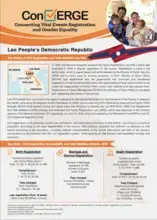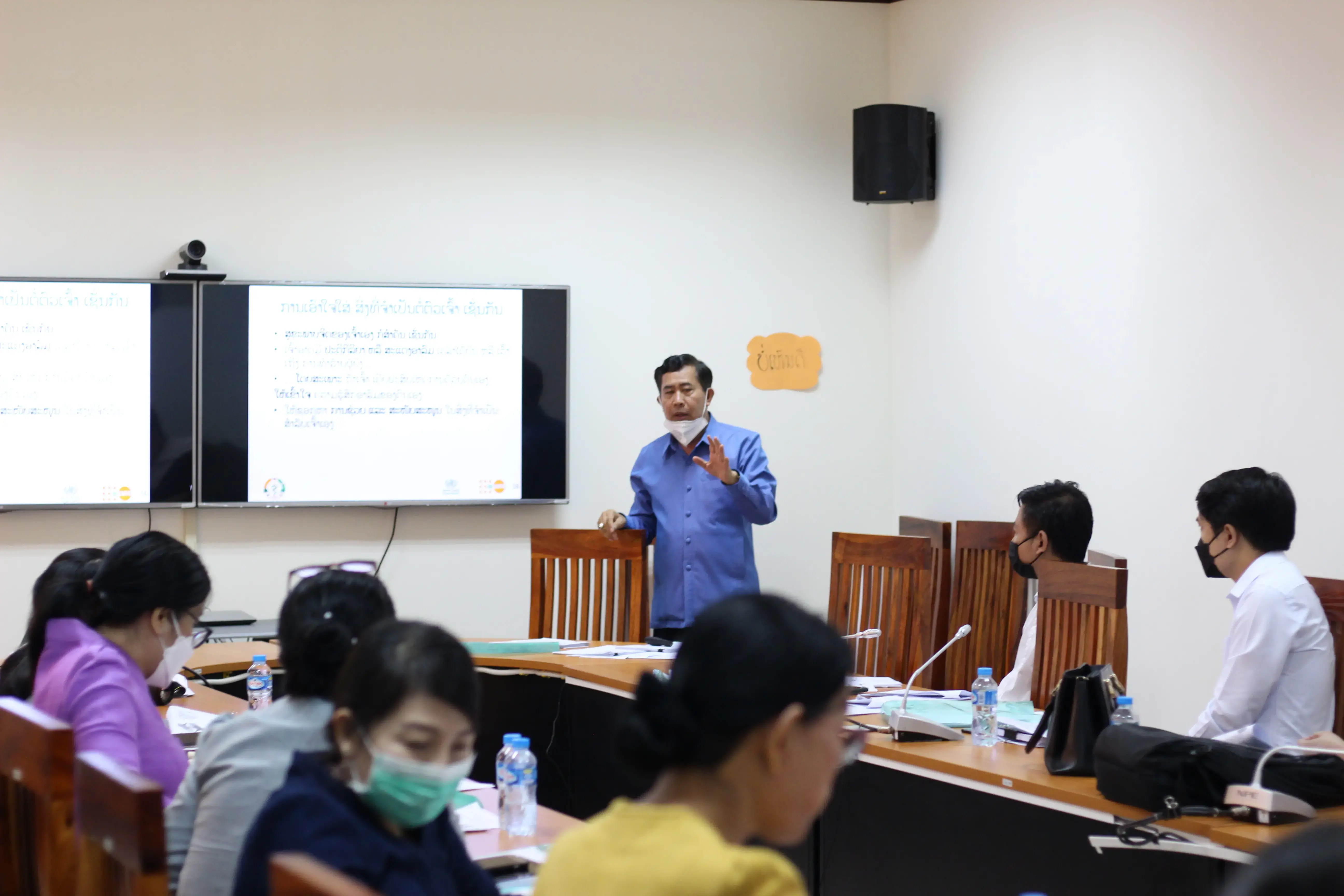La provides psycho-social support for victims of violence and human trafficking through a community organization in Vientiane, Laos.
However, in her private life, she lives in the shadow of violence.
Three years ago, she married her husband, a hot-tempered man with drug problems. She had hoped that her love would change him for the better. But to her despair, he became violent towards her, with kicking and pushing part of the routine after he got drunk.
The violence soon escalated to be life-threatening. “He pulled out a real gun and pointed at me when I tried to stop him from excessive drinking,” said La, who still remembers the trauma from one extreme incidence. Her husband lost control even when she was holding their baby girl.
La was in tears when these memories flashed back. Yet, what’s more saddening, she does not see a way out, even though she is involved in helping other women to cope with similar experiences.
“I can only share my story with a few colleagues, not with my mum, my brothers, and the police,” La sighed and sobbed. She knew that she had to endure this for now. If she spoke out, she would be blamed for breaking the family harmony, and the violence would continue.
Violence against Lao women and girls: hidden and justified
La is not alone. Violence against women is a human right violation affecting women and girls of all socio-economic backgrounds around the world.
Lao PDR is no exception. As the National Survey on violence against women revealed, one in three Lao women, married or in a partnership, reported to have experienced at least one type of violence: physical, sexual and emotional. The national survey was the first one to collect national violence prevalence data in Laos in line with international standards, supported by the Government and the UN.
Violence does not just prevail. It’s hidden. The survey showed that in Laos only one in five women who experienced violence from their spouses turned to local authorities for help, only four per cent reached out to the police and three per cent to health services, due to discriminatory gender roles coupled with inadequate services and support systems.
The report further disclosed that there was a high-level tolerance of violence in Lao society, with 58 per cent of women and 49 per cent of men reported that gender-based violence could be justified if women did not follow traditional gender norms, roles, and relations.
Making essential services package available to women and girls in Laos
Significant progress has been made in Lao PDR through national policies and laws developed to protect women and girls from violence. All forms of violence are prohibited by law on Combating and Preventing Violence Against Women and Children since 2014. Gender equality and women’s empowerment are also addressed by relevant national and sectoral development plans.
However, further steps must be taken to fill the gaps in implementing the existing laws and policies, so that La can be empowered to access services and support for her and her daughter from multiple sectors, including community, health, justice, police, and education.
Lao Women’s Union and the United Nations Population Fund (UNFPA), together with other UN agencies and the civil society, have started to roll out a five-year plan to localize the Essential Services Package for Women and Girls Subject to Violence (ESP), a set of global practical tools and guidelines to develop effective multi-sectoral mechanisms to prevent and respond to gender-based violence. Jointly developed by UNFPA, UN Women, UNODC and WHO in 2015, the ESP has been proven effective in many countries.
At a recent multi-stakeholder consultation workshop on ESP, Ms. Thoummaly Vongphachanh, Vice President of the Lao Women’s Union emphasized the importance of strong coordination among health, social, and policing and justice sectors for effective prevention and responses to gender-based violence to ensure that quality essential services are provided in time for women victims of violence by these sectors.
Involving both boys and girls to break the cycle of violence
At home, La is not the only one suffering from violence from her husband. Her three-year-old daughter has been affected by seeing what her mother has gone through.
The National Survey showed that 40 per cent of female victims of physical violence from their partners said their children had witnessed this violence at least once. This survey further confirmed that children living in violent households are more likely to develop serious problems, including aggressive behaviour, nightmares and weaker academic performance, compared to children in households without violence.
Ms. Mariam Khan, UNFPA Representative in Laos, stressed that the cycle of violence must be broken by actively involving both boys and girls in the fight against gender-based violence. She reassured that together with partners, UNFPA will continue to involve young people as change agents to promote positive gender norms in households, schools and communities in Laos.
In addition, violence against women and girls take on many other forms of harmful practices such as child marriage. With the highest proportion of early marriage and the highest adolescent birth rate in the region, the policy and programmatic responses to gender-based violence in Laos has to address vulnerabilities of adolescent girls guided by the 2030 Noi Framework, a long-term vision to empower girls and young people, both in-and out-school, with knowledge and life skills to make their own choices in life.
By UNFPA Lao PDR





